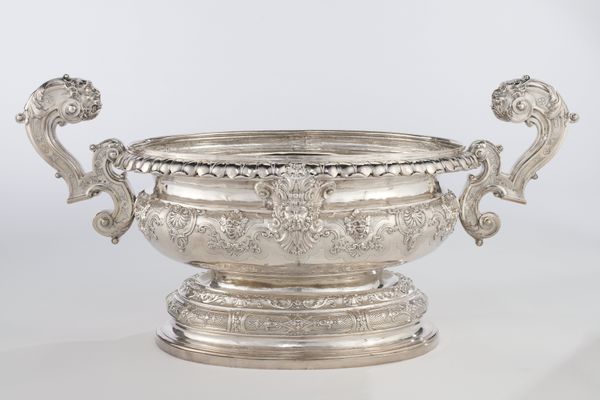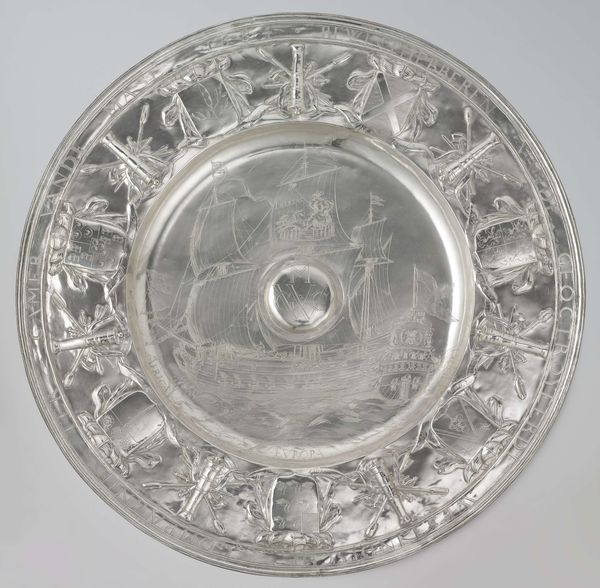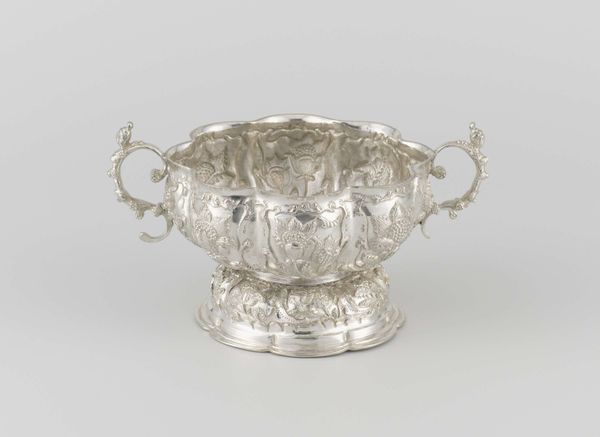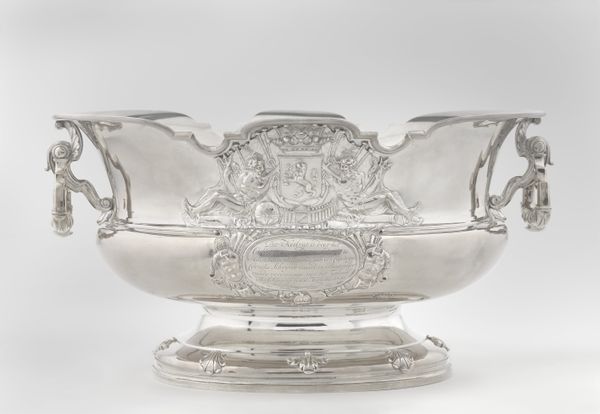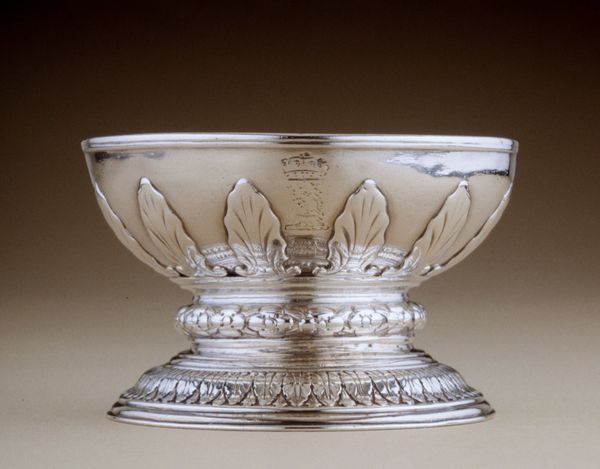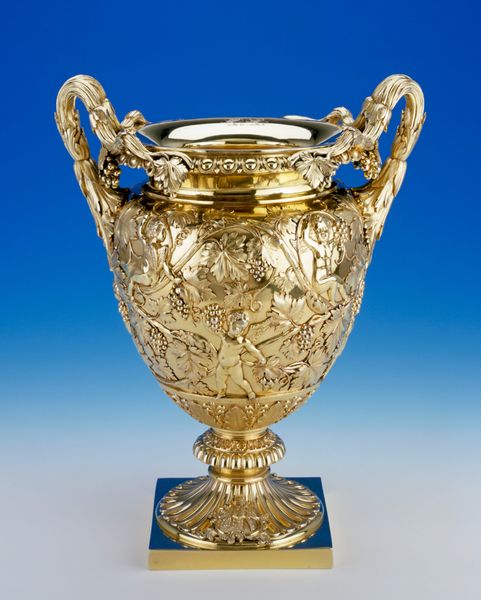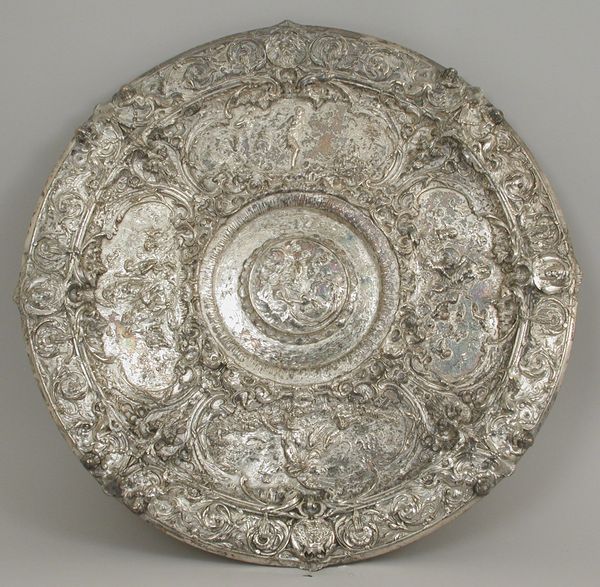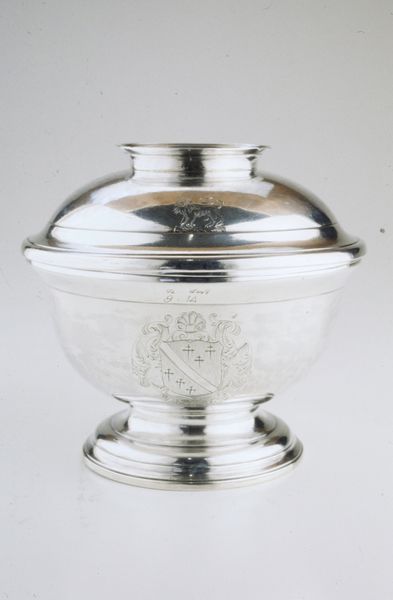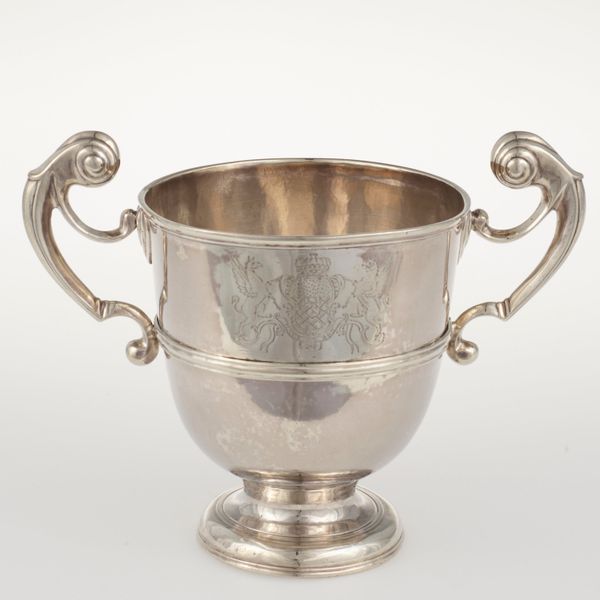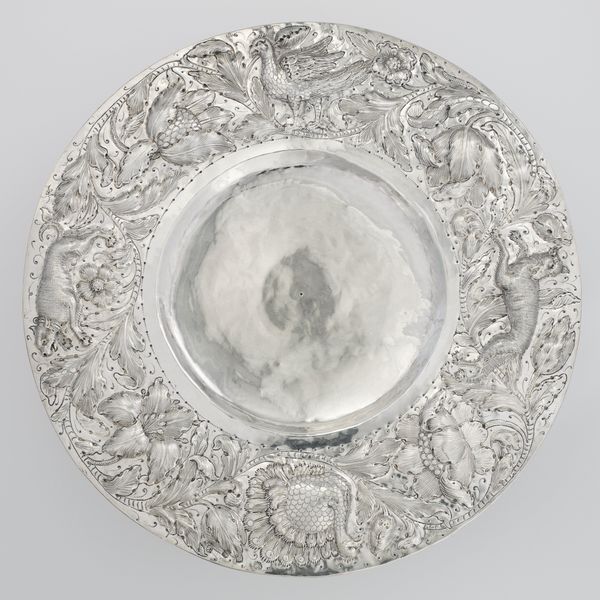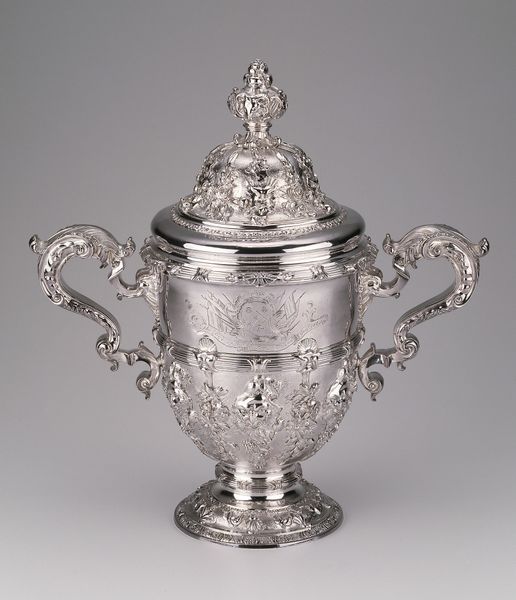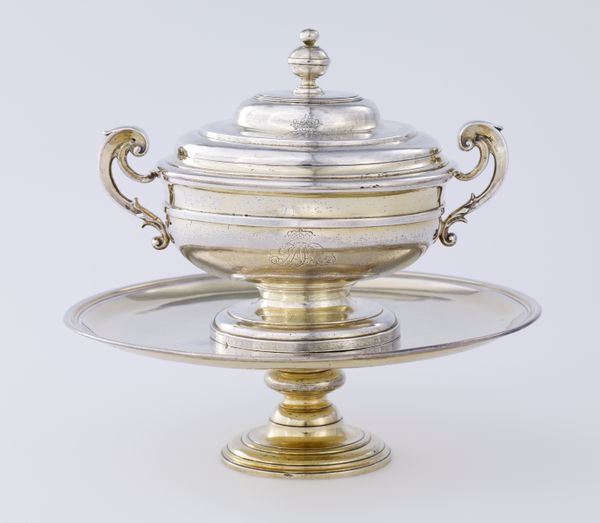
silver, metal
#
silver
#
metal
#
geometric
#
ceramic
#
decorative-art
Dimensions: 1 3/4 × 25 3/4 × 25 3/4 in. (4.45 × 65.41 × 65.41 cm)
Copyright: Public Domain
Editor: This is a "Passover Seder Plate" made sometime between 1812 and 1822 by Pacifico Levi. It’s crafted from silver, which gives it such a bright, almost reflective quality. What first strikes me is its concentric design, how the patterns radiate outward. What significance do you see in the imagery used here? Curator: The concentric circles you noted speak volumes. They echo the cycles of life, the passing down of tradition, the shared memory of a community. Think about the Seder itself – it's a ritual meal, a reenactment, designed to connect generations to a pivotal moment in their history: the Exodus. What details in the decorative elements jump out to you? Editor: I notice the floral patterns around the edge – they seem both delicate and deliberate. Are they purely decorative, or do they hold a deeper symbolism? Curator: Floral motifs often represent renewal, hope, and the blossoming of life, particularly in connection with Spring celebrations, reflecting the season during which Passover falls. And, consider the material - silver is a precious metal, right? It signifies not only wealth, but also purity, reflection, a mirror held up to the past, present and future. Does the reflective surface give you any thoughts on how that connects with memory? Editor: That makes me think about how the story of Passover is, in a way, constantly being re-told and re-experienced. Each year it's like looking into a mirror, reflecting on the past, but also seeing our current selves in that story. It's quite a powerful concept embodied in a simple plate. Curator: Precisely! And think of how the placement of symbolic foods around its center encourages dialog within a community across time and space. Its aesthetic also informs of how historical collective memory may evolve and carry different valences through visual representation. Thank you for such excellent insights. Editor: Thank you, I've learned so much about this single object!
Comments
minneapolisinstituteofart over 1 year ago
⋮
Pacifico Levi and his workshop associates employed a technique called “repoussé” to create the decorations on this plate. The French term literally means “to push back.” First, they hammered from the back of the plate to create the designs on the front: concentric borders of leaves, interlocking almond-shaped strap work, and leafy scrolls. These they further refined with engraved and punched details on the front. The flower in the center was cast separately and attached.
Join the conversation
Join millions of artists and users on Artera today and experience the ultimate creative platform.

